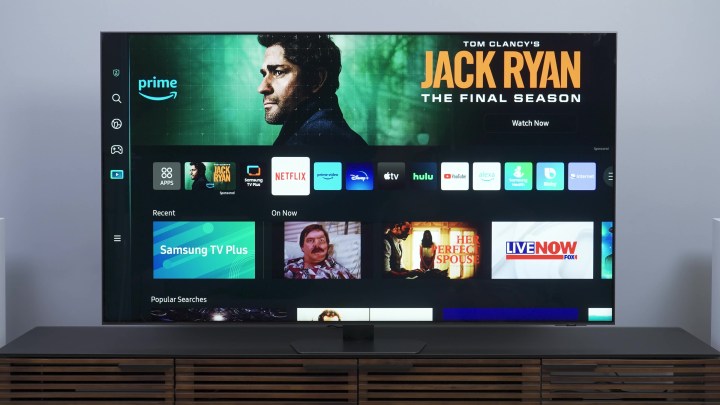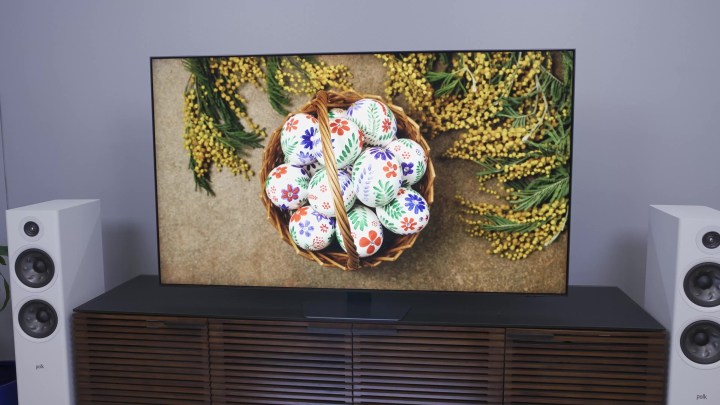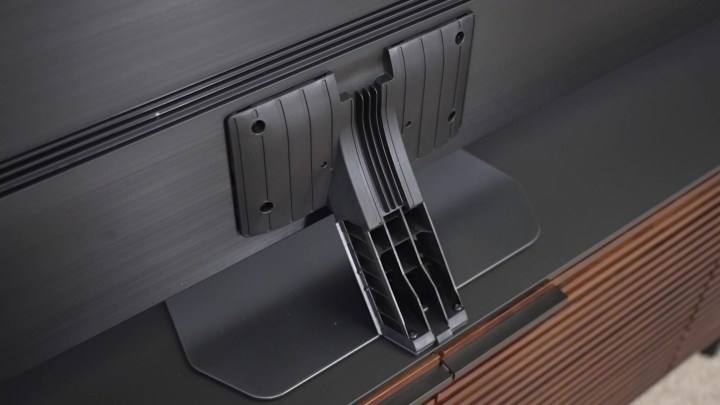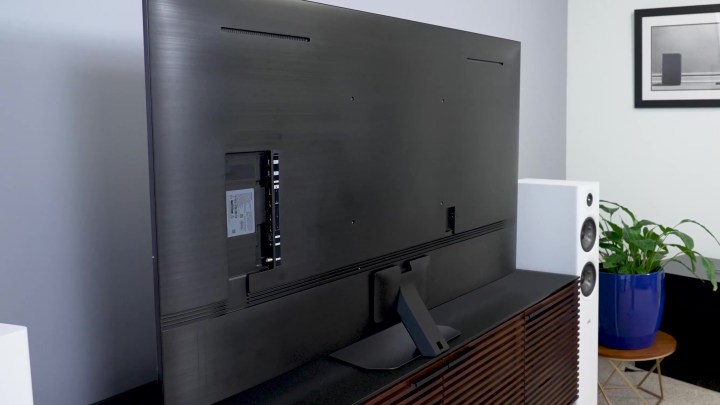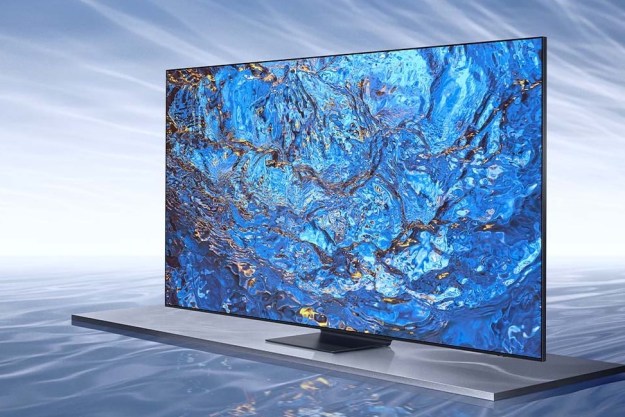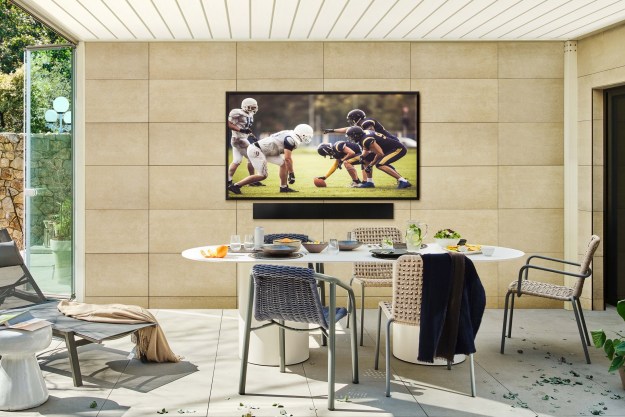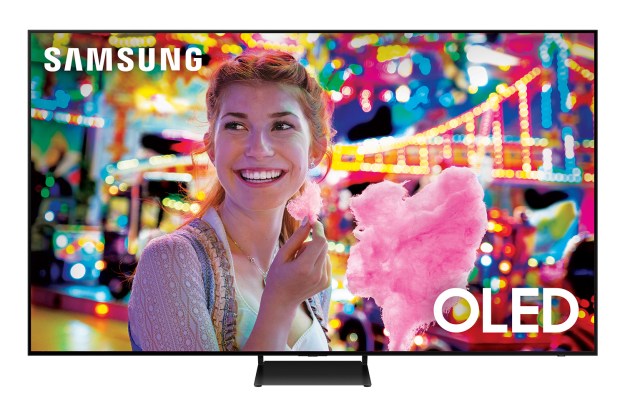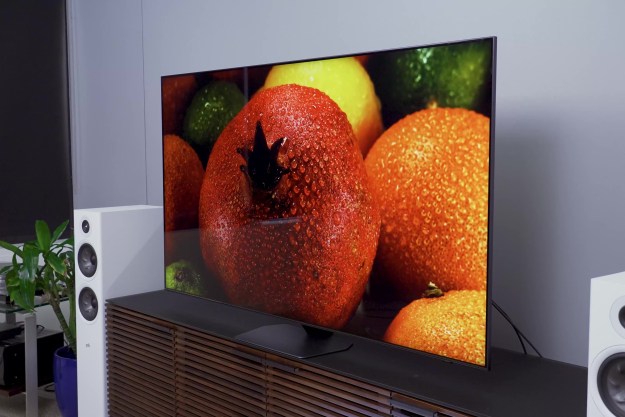
- Class-leading HDR performance
- Excellent black levels, backlight control
- Outstanding color performance
- Powerful processing
- Premium design and build
- Frustrating Smart TV OS
- Lofty price
Let’s not beat around the bush. You’re going to be paying a premium for the Samsung QN90C — Samsung set the MSRP at $2,800 for the 65-incher, though it is often on sale at around $2,100. The only questions left are what are you getting for that premium, and is it worth it?
Actually, there is one more question: Doesn’t the QN90C look an awful lot like last year’s QN85B rather than a successor to the QN90B? It’s a fair question, but the answer is a little complicated.
On paper, the QN90C looks more like the 2022 QN85B than it does a straight replacement for last year’s QN90B. There are two things at play here. At the corporate level, Samsung restructured its TV lineup for 2023. But at the consumer level, the QN90C is Samsung’s response to what we asked for.
Yes, the TV enthusiast community asked for certain changes, and Samsung delivered them in the QN90C.
Shuffling the lineup
First, let’s talk about the restructuring. Last year, the QN95B wasn’t destined for the North American market. The QN90B was supposed to be the
This year, the QN95C was planned as the top 4K QLED for 2023. It’s got more dimming zones, a more elaborate speaker system, slightly higher peak brightness, and a few other little bells and whistles. That means that the QN90C here has to be a step down, and that means that it looks a little more like last year’s QN85B.
Series and size details
While we reviewed the 65-inch (QN65QN90C) model, our review also applies to the 43-inch, 50-inch, 55-inch, 75-inch, and 85-inch models in the Samsung QN90C Series.
| Screen Size | Model Number | MSRP |
| 43-inch | QN43QN90C | $1,200 |
| 50-inch | QN50QN90C | $1,600 |
| 55-inch | QN55QN90C | $2,000 |
| 65-inch | QN65QN90C | $2,800 |
| 75-inch | QN75QN90C | $3,200 |
| 85-inch | QN85QN90C | $4,800 |
We asked for it
Samsung also made a few technological changes in response to our requests and/or complaints — again, “our and we” in this context refers to the TV enthusiast community made up of reviewers like me and vocal fans like you.
Notably, the QN90C doesn’t have the same antiglare technology that the QN90B had. While Samsung’s best antiglare technology is extremely effective at reducing reflections, it has the side effect of scattering ambient light in such a way that results in a sort of faded rainbow effect. Some folks complained about that.
Taking things a step further, that antiglare technology is tied into Samsung’s off-angle improvement technology, which is why you see Samsung marketing “antiglare with Ultra Viewing Angle.”
So, Samsung dropped that technology on the QN90C, but it still wanted to have improved off-angle viewing. As such, Samsung is using what’s called an ADS LCD panel on this TV. ADS is similar to LG’s IPS, which is known for having inherently better off-angle viewing than the very common VA panel type. Historically, the problem with ADS and IPS has been that black levels weren’t as good. But with mini-LED backlighting tech, ADS and IPS panels can have excellent black levels and black uniformity while also offering great off-angle viewing.
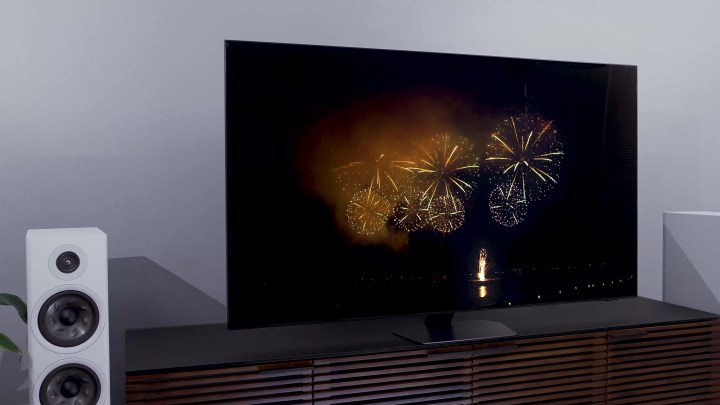
So, what we have here is a TV that doesn’t have the rainbow effect from Samsung’s antiglare tech, but still has good off-angle viewing and great black levels. Unfortunately, the antiglare the TV does have is not as effective, so reflections can be visible. Trade-offs, folks. TV design is and always has been about making trade-offs.
If you put the QN90C in filmmaker mode, it tracks the electro-optical transfer function very well.
Next on the “we asked for it” list is the QN90C’s slightly lower average picture level, or overall brightness. This TV still gets plenty bright. But you may recall that last yearmany reviewers complained that Samsung’s
Well, this year, if you put the QN90C in filmmaker mode, it tracks the the EOTF (electro-optical transfer function) very well. In other words, it makes an HDR picture that’s just bright as it is told to make it without adding anything. Now, you can get the TV to be brighter. You can start by picking the movie mode, you can make sure the
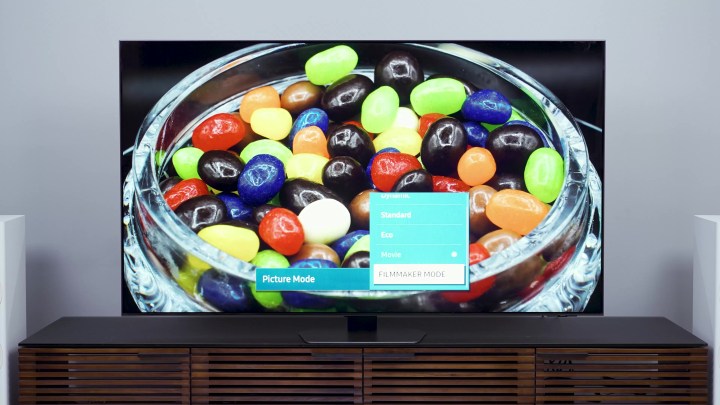
As for the slightly lower brightness specs over last year’s QN90B? Well, remember that the QN95C is now the top
All of that to say that while the QN90B last year was considered by many — including myself — to be the best alternative to OLED that you could buy in a
Picture quality: you pay for what you get
Well, I’ll just answer that question right now: Yes, in many key ways, the QN90C is a bit better than the TCL QM8 or Hisense U8K. Most notably, its upscaling and picture cleanup processing is better than either the TCL or Hisense TVs. When I watch low-resolution and low bit-depth content (note, it’s about bit depth, not just bit rate), Samsung does a better job of smoothing out color banding, pixelization, and posterization, all of which are fancy display nerd terms for stuff that makes for a dirty, fuzzy-looking picture. The QN90C has a very clean, crisp image when playing back less-than-awesome content from Sling TV,
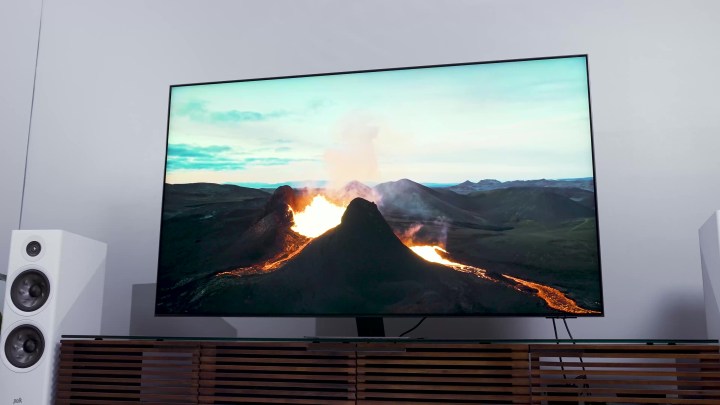
It’s also got better out-of-box color accuracy and color temperature when using the Movie mode or Filmmaker mode than its less expensive competition. And if you do want to have it calibrated to perfection, all the controls you need are here.
The QN90C, being a Samsung QLED TV, also has four full-bandwidth HDMI 2.1 ports that support
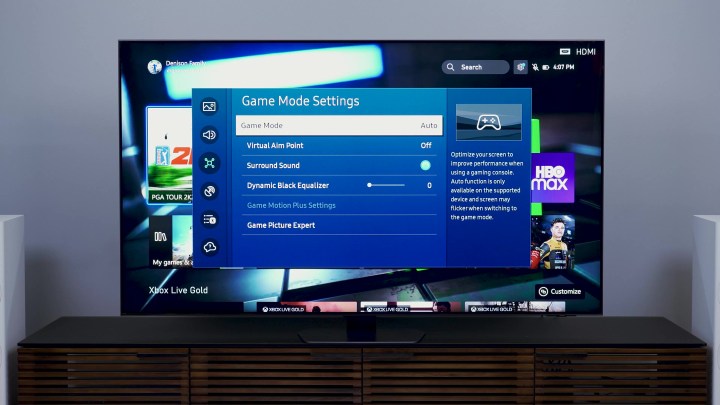
Its Gaming picture preset leaves a little to be desired — I noticed that the backlight control system doesn’t seem to be as effective in Game mode as it is in the Movie or Filmmaker mode picture presets, and it tends to look over-brightened to me.
But, overall, the QN90C outperforms its competition in many key ways. It’s got a gorgeous picture, highly impactful
The TV peaks at about 2,000 nits for SDR and

Considering how bright it can get, blooming and halo are well controlled, You will see some blooming and halo when you have small, intensely bright objects on very dark backgrounds, especially off-angle, but the black letter bars stay black and you don’t see a massive bloom when you engage white subtitles over the letterbox bars the way you do on some TVs.
Really, my only complaint from a performance perspective is that the backlight system itself seems to be a little slow-moving. When using test patterns, the transition between backlight zones is a little sluggish, but, to be honest, this was rarely visible when watching normal movie and TV content. Mostly, I spotted it when playing games where you move extremely quickly, causing a bright patch amid darkness to move rapidly on-screen. In those cases, it’s apparent, but you’ll have to decide how often you think you’ll be doing that kind of thing with your TV.
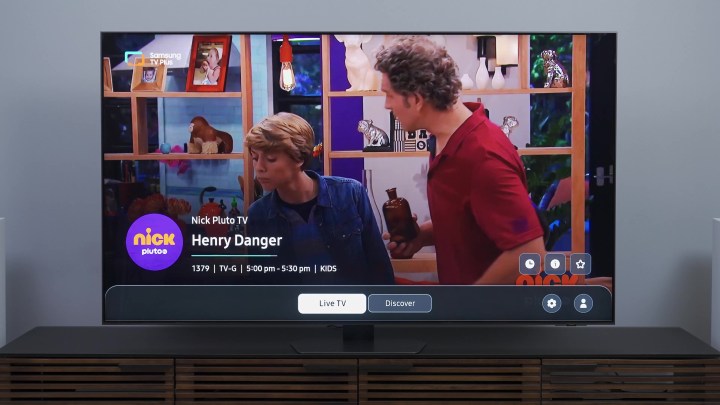
My only complaint from a non-picture performance perspective is around Tizen, which I could just do without — especially the auto-play video feature. That’s bad on the internet and it’s bad on your TV. And I still haven’t found a way to turn it off.
Moving forward, I’m going to dig into a direct comparison between the Samsung QN90C and the TCL QM8, and I’ll let you decide whether the Samsung earns its premium price, but I hope I have made it clear that you definitely do get a bit more from the Samsung. Whether you value those improvements enough to spend a lot more is up to you.
But when we get out of the weeds and take a 10,000-foot perspective, there’s no doubt the QN90C is a really excellent TV, and very much what I expected from Samsung. I was immensely impressed the first time I saw it, and I’m still very impressed. You don’t need to root around in the picture settings a bunch to get a great picture, just pick Movie or Filmmaker mode – whichever you like better, and enjoy.
This is the premium Samsung TV I think most folks should consider buying, and it is definitely a short-list TV for anyone who values premium picture quality.
Editors' Recommendations
- Best Samsung TV deals: Save on 4K TVs, QLED TVs, OLED TVs, 8K TVs
- Best QLED TV deals: Samsung, TCL, LG and Vizio
- Samsung’s new 98-inch DU9000 4K TV is just $4,000. Can it beat TCL and Hisense?
- Samsung’s 2024 Neo QLED TVs are here, and you can preorder them now from $1,200
- Mini-LED vs. QLED TV: how one technology is improving the other


